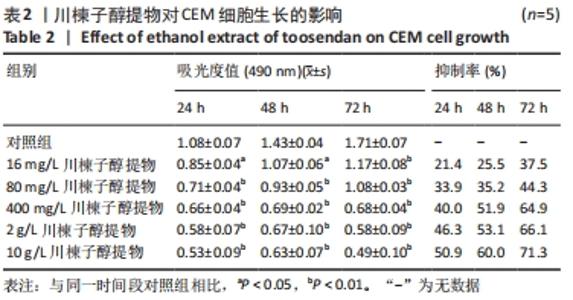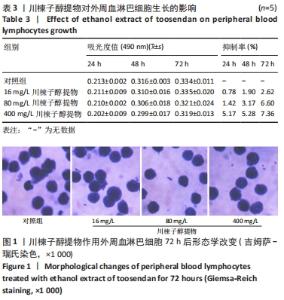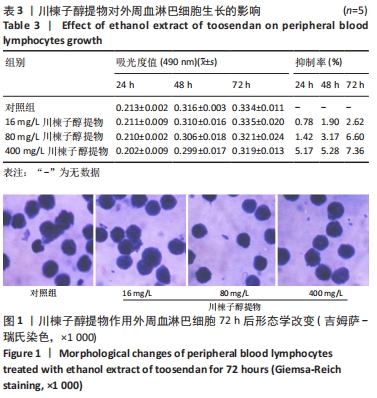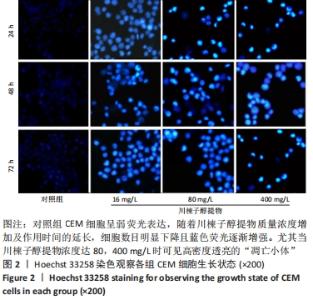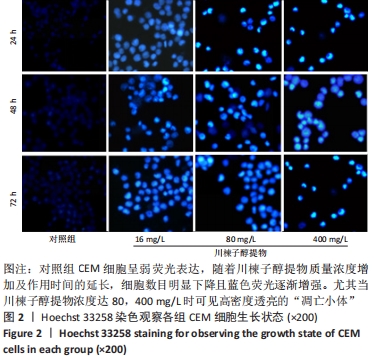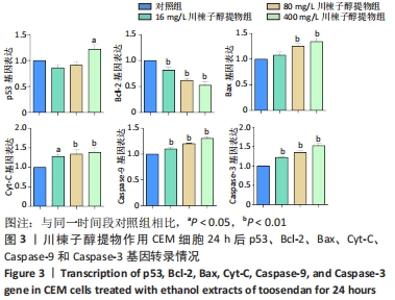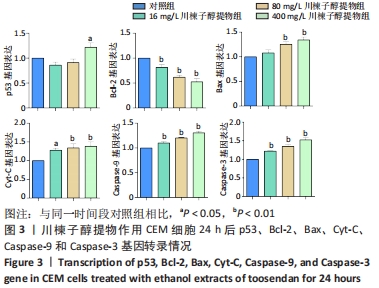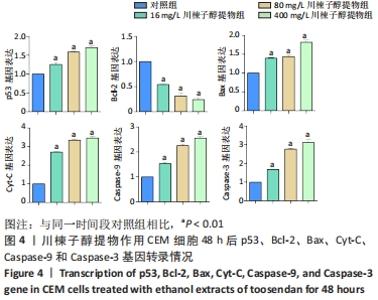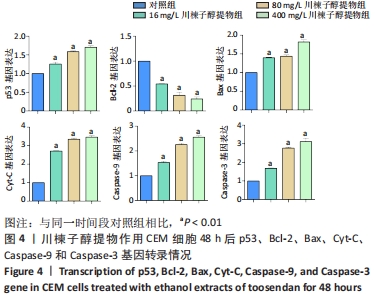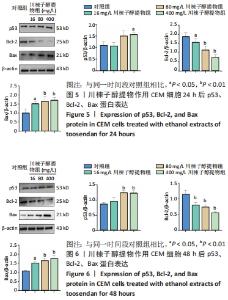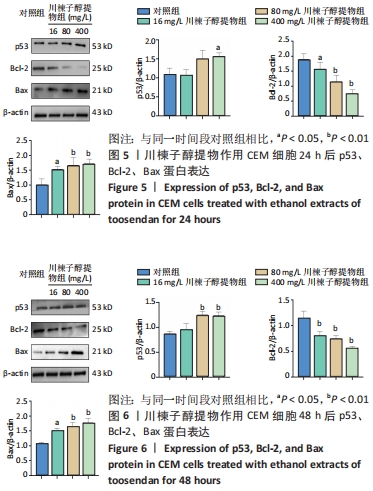[1] 戴代友.急性白血病患者骨髓象检验分型和血象对比情况[J].按摩与康复医学,2020,11(15):60-61.
[2] KAYSER S, LEVIS MJ. Advances in targeted therapy for acute myeloid leukaemia. Br J Haematol. 2018;180(4):484-500.
[3] PUI CH, RELLING MV, DOWNING JR. Acute lymphoblastic leukemia. N Engl J Med. 2004;350(15):1535-1548.
[4] CAO P, YU Y, WANG W, et al. Fluorescence in situ hybridization comparison of the prognostic factors in adult and pediatric acute lymphoblastic leukemia: A retrospective analysis of 282 cases. Exp Ther Med. 2018;16(6):4674-4684.
[5] WANG X, LOU K, SONG X, et al. Mebendazole is a potent inhibitor to chemoresistant T cell acute lymphoblastic leukemia cells. Toxicol Appl Pharmacol. 2020;396:115001.
[6] 赵铁军,张熠玲,邹丰,等.成人T细胞白血病治疗进展[J].浙江师范大学学报(自然科学版),2020,43(2):191-198.
[7] 董庆海,李雅萌,吴福林,等.川楝子的研究进展[J].特产研究,2018, 40(1):63-68.
[8] ZHANG B, WANG ZF, TANG MZ, et al. Growth inhibition and apoptosis-induced effect on human cancer cells of toosendanin, a triterpenoid derivative from chinese traditional medicine. Invest New Drugs. 2005; 23(6):547-553.
[9] SHAO S, LI S, LIU C, et al. Toosendanin induces apoptosis of MKN‑45 human gastric cancer cells partly through miR‑23a‑3p‑mediated downregulation of BCL2. Mol Med Rep. 2020;22(3):1793-1802.
[10] LIU XL, WANG H, ZHANG L, et al. Anticancer effects of crude extract from Melia toosendan Sieb. et Zucc on hepatocellular carcinoma in vitro and in vivo. Chin J Integr Med. 2016;22(5):362-369.
[11] 朱大诚,徐丽婷,况东,等.白花蛇舌草诱导白血病CEM细胞凋亡的分子机制[J].中国老年学杂志,2019,39(15):3738-3740.
[12] 朱大诚,周军,何莲花,等.山豆根水提物对白血病CEM细胞生长抑制及其机制研究[J].时珍国医国药,2012,23(8):1931-1933.
[13] 朱大诚,徐笑明,陈秀珍,等.白头翁醇提物抑制白血病CEM细胞的增殖研究[J].时珍国医国药,2020,31(12):2904-2908.
[14] 朱大诚,尹小明,黄学明,等.蟾酥对白血病CEM细胞的抑制作用及诱导其凋亡的研究[J].时珍国医国药,2007,18(10):2398-2400.
[15] 刘小玲.川楝素提取物的制备和抗肿瘤机理研究[D].重庆:重庆医科大学,2009.
[16] 唐英,郭惠,胡德斌,等.超声波提取川楝素的方法研究[J].西南民族大学学报(自然科学版),2004,30(6):714-717.
[17] 李洁玉,沈力,周浓,等.回流提取川楝子中川楝素工艺的优化[J].安徽农业科学,2011,39(8):4518-4520.
[18] WANG L, ZHOU GB, LIU P, et al. Dissection of mechanisms of Chinese medicinal formula Realgar-Indigo naturalis as an effective treatment for promyelocytic leukemia. Proc Natl Acad Sci U S A. 2008;105(12): 4826-4831.
[19] 苗长久.川楝素对人胃癌SGC-7901细胞增殖的影响[J].基因组学与应用生物学,2020,39(7):3197-3202.
[20] 李雨颖,金莉婷,林江涛,等.川楝素通过线粒体途径诱导人卵巢癌细胞凋亡[J].中国药学杂志,2018,53(2):109-113.
[21] 刘小玲,王进,张伶,等.川楝素提取物诱导K562细胞凋亡的实验研究[J].中草药,2010,41(3):426-431.
[22] 王进,刘小玲,王鹏,等.川楝素对K562细胞增殖和凋亡作用的影响[J].第四军医大学学报,2009,30(22):2528-2532.
[23] 王立蓉,戴峰,孙小峰.慢病毒介导的KIAA1199表达下调对肝癌HuH-7细胞增殖和凋亡的影响及机制[J].胃肠病学和肝病学杂志, 2020,29(1):1-6.
[24] CHENG X, FERRELL JE JR. Apoptosis propagates through the cytoplasm as trigger waves. Science. 2018;361(6402):607-612.
[25] GAO T, XU H, JIA S, et al. Magnolol induces human Ewing sarcoma SK-ES-1 cell apoptosis via the mitochondrial and death receptor pathways. Am J Transl Res. 2020;12(5):1672-1682.
[26] CARNEIRO BA, EL-DEIRY WS. Targeting apoptosis in cancer therapy. Nat Rev Clin Oncol. 2020;17(7):395-417.
[27] PISTRITTO G, TRISCIUOGLIO D, CECI C, et al. Apoptosis as anticancer mechanism: function and dysfunction of its modulators and targeted therapeutic strategies. Aging (Albany NY). 2016;8(4):603-619.
[28] 张晓娟.线粒体分裂抑制剂Mdivi-1通过抑制内、外源性凋亡途径减少EAE小鼠少突胶质细胞的损伤[D].太原:山西医科大学,2020.
[29] YANG F, PEI R, ZHANG Z, et al. Copper induces oxidative stress and apoptosis through mitochondria-mediated pathway in chicken hepatocytes. Toxicol In Vitro. 2019;54:310-316.
[30] HEO SK, NOH EK, YU HM, et al. Radotinib enhances cytarabine (Ara-C)-induced acute myeloid leukemia cell death. BMC Cancer. 2020;20(1): 1193.
|
